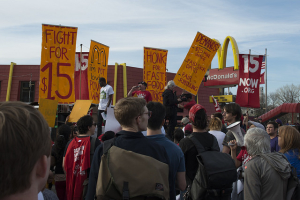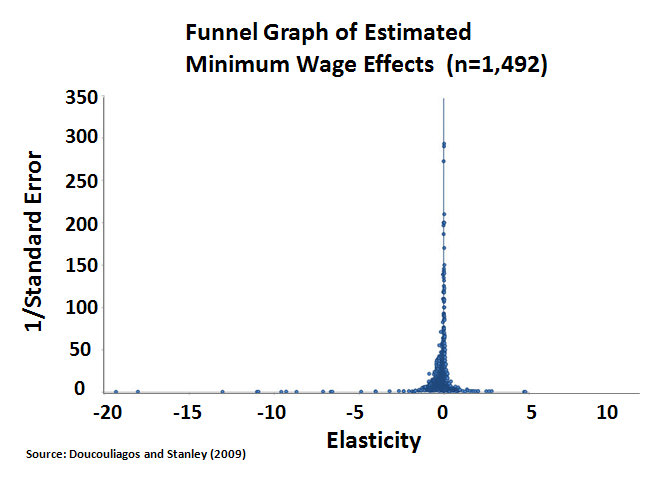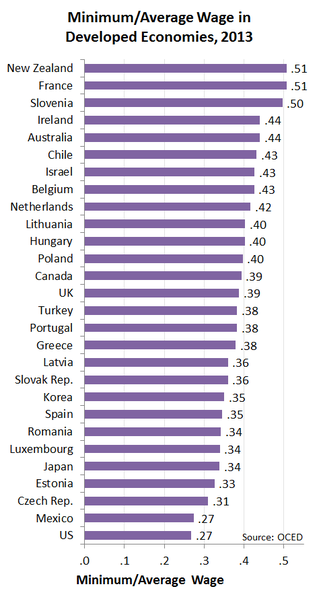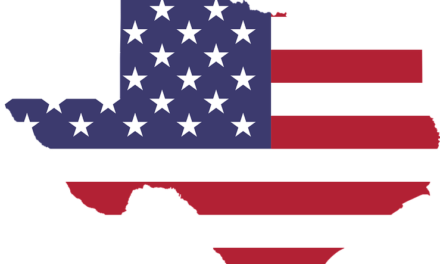
April 2015 protest for a $15 minimum wage in Minneapolis, courtesy of Fibonacci Blue, CC BY 2.0.
We’ve often posted about efforts to raise the minimum wage in the last couple years, from examining typical household budgets for those making the minimum wage to considering the effects of Wal-Mart’s wage increase. It seems the debate about a minimum wage is far from over though, so today we’re looking at the results of various efforts to increase the minimum wage.
Minimum Wage Ordinances in the Courts
Seattle is often credited with kicking off the recent round of minimum wage increases in the United States when it passed its incremental wage increase in June 2014. As we mentioned in our original coverage of Seattle’s $15 minimum wage ordinance, the International Franchise Association (IFA) filed a lawsuit in June 2014 against the City of Seattle in U.S. District Court because of what it considered an unfair categorization of franchisees as large employers. On September 25, 2015, the 9th Circuit Court of Appeals agreed with an earlier court decision denying the IFA a temporary injunction to block the relevant portion of Seattle’s minimum wage ordinance.
Of course, before Seattle passed its minimum wage ordinance, the nearby town of SeaTac passed an even more daring minimum wage ordinance in November 2013. On August 20, 2015, the Washington State Supreme Court ruled that the SeaTac minimum wage law does apply to workers at Seattle-Tacoma International Airport. Because SeaTac’s Proposition 1 included an annual adjustment for inflation, airport workers will now be receiving at least $15.24 per hour. The only issue that is not yet settled is whether the increase will be retroactive to January 1, 2014, when the Proposition 1 wage increase first went into effect.
Research on the Effects of the Minimum Wage
So, the recent minimum wage ordinances have done well in the courts, but have they helped or hurt workers and the economy? It seems the jury is still out on that matter. Some sources have claimed that businesses are doing fine and the wage increases have had very little effect on employment of minimum wage earners, while others have insisted that jobs have been lost and companies are seeking less expensive places to do business, as well as shifting jobs towards more experienced workers and looking at ways to increase efficiency, including increasing automation.
Even professional economists and academic researchers are having difficulty reaching a consensus about the effects of the minimum wage, despite years of study. A 2013 literature review concluded that the weight of the evidence indicated “little or no employment response to modest increases in the minimum wage” when examining the results of increases of 5% to 10%. They went on to state that the empirical evidence is “either inconclusive (statistically insignificant or positive in some cases and negative in others) or suggestive of only small economic effects.” Similarly, a 2014 paper by Belman and Wolfman published in Employment Research examined 70 articles on the effects of the minimum wage in the United States and other countries and found “results that range between large, statistically significant negative effects to small, statistically significant positive effects.” When considering only data for the United States, the authors concluded that employment declines after a 10% minimum wage increase were too small to be statistically significant.

Funnel graph of estimated minimum wage effects on employment from a meta-study. Source: Doucouliagos, H., and T.D. Stanley. 2009. “Publication Selection Bias in Minimum-Wage Research? A Meta-Regression Analysis.” British Journal of Industrial Relations 47:406–428.
All of the research that we have seen so far has looked at modest increases in the minimum wage, typically not more than about 10% at a time. So, what happens with larger increases? SeaTac raised its minimum wage 63% on January 1, 2014, from $9.19 to $15 per hour. It’s been almost 2 years now, but we still don’t have enough data to really know the effects, and it’s been estimated that only about 1,500 employees were initially affected, so it’s a fairly small sample. Seattle’s new minimum wage began to take effect on April 1, 2015, but the initial increase was only from $9.47 to $11.00 per hour, and there were some exceptions even for that increase.
In an attempt to provide better data on how larger increases in the minimum wage actually affect businesses, earnings, employment, and low-income families, seven researchers from the University of Washington and two from the Washington State Department of Employment Security are conducting a 5-year study in Seattle. The researchers will examine effects across the city, but they will also follow 40 low-income families to see how their lives are affected, including their job prospects, incomes, benefits, working hours, and costs of living.
Minimum Wages Around the World

2013 minimum wage levels in OECD countries as a share of average full-time wage. Courtesy of Wikimedia Commons user Guest2625, CC BY-SA 3.0.
So, how does the minimum wage do outside the United States? Australia was one of the first countries to implement a minimum wage, back in 1907, and it has one of the world’s highest minimum wages. But in January 2015, the Australian Productivity Commission undertook a study of workplace issues, including the minimum wage. Many Australians were upset at the idea that the government might actually repeal the minimum wage. However, in the August 2015 Workplace Relations Framework Draft Report, the Productivity Commission concluded that “Minimum wages are justified, and the view that existing levels are highly prejudicial to employment is not well founded. However, significant minimum wage increases pose a risk for employment, especially when set against a weakening labour market.” The final report is expected to be released later this month (November 2015). In the meantime, Australia’s Fair Work Commission raised the minimum hourly wage to $17.29 an hour in June. Many were disappointed by the 2.5% increase, either because they thought it wasn’t enough to decrease the widening wage gap in the country, or because they worried that it was too much of an increase and would lead to job cuts or reduced hours. Sounds familiar, right?
Complaints about wage gaps are common in developing economies, too. In a 2014 CEPII Working Paper, researchers looked at the results of the development of minimum wage rules in China, which had no minimum wage until 1993. They concluded that increasing the minimum wage lowered the survival probability of local firms. However, there was no net change in employment because more efficient firms replaced the less efficient firms. Moreover, the increased minimum wage fostered an increase in overall productivity and competitiveness, thus boosting the aggregate efficiency of the Chinese economy.
A Minimum Wage of $70,000 Per Year?
Of course, implementing a government-mandated minimum wage isn’t the only method available for reducing income inequality. One Seattle business, Gravity Payments, is experimenting with a vastly different model for reducing income inequality. In April 2015, CEO Dan Price announced that he was going to raise the minimum salary at Gravity to $70,000 per year over the next 3 years, and cut his own $1.1 million salary down to that same $70,000 to help pay for the increase. Doomsayers immediately claimed that it would be a disaster, but 6 months later, the company is doing remarkably well. Gravity’s already high customer retention increased from 91% to 95%. Two employees quit, but applications from well-qualified candidates skyrocketed. Revenue is growing at twice the previous rate, and profits have also doubled.
So, workers in SeaTac are already making more than $15 an hour, and cities such as Los Angeles, San Francisco, and Seattle have already passed ordinances to gradually increase the minimum wage to $15 an hour. After achieving a $15 minimum wage increase for fast-food workers (to be implemented in phases), New York’s Governor Andrew Cuomo is now seeking to implement a $15 minimum wage for all workers statewide by 2021. Similar efforts, backed by labor unions, are underway in California, Maine, and the District of Columbia.
We’ll post periodic updates on these efforts, so watch the blog or sign up for our newsletter (see the sidebar) if this is a topic that interests you. And if there are other topics you’d like to see us write about, let us know in the comments below.






Recent Comments